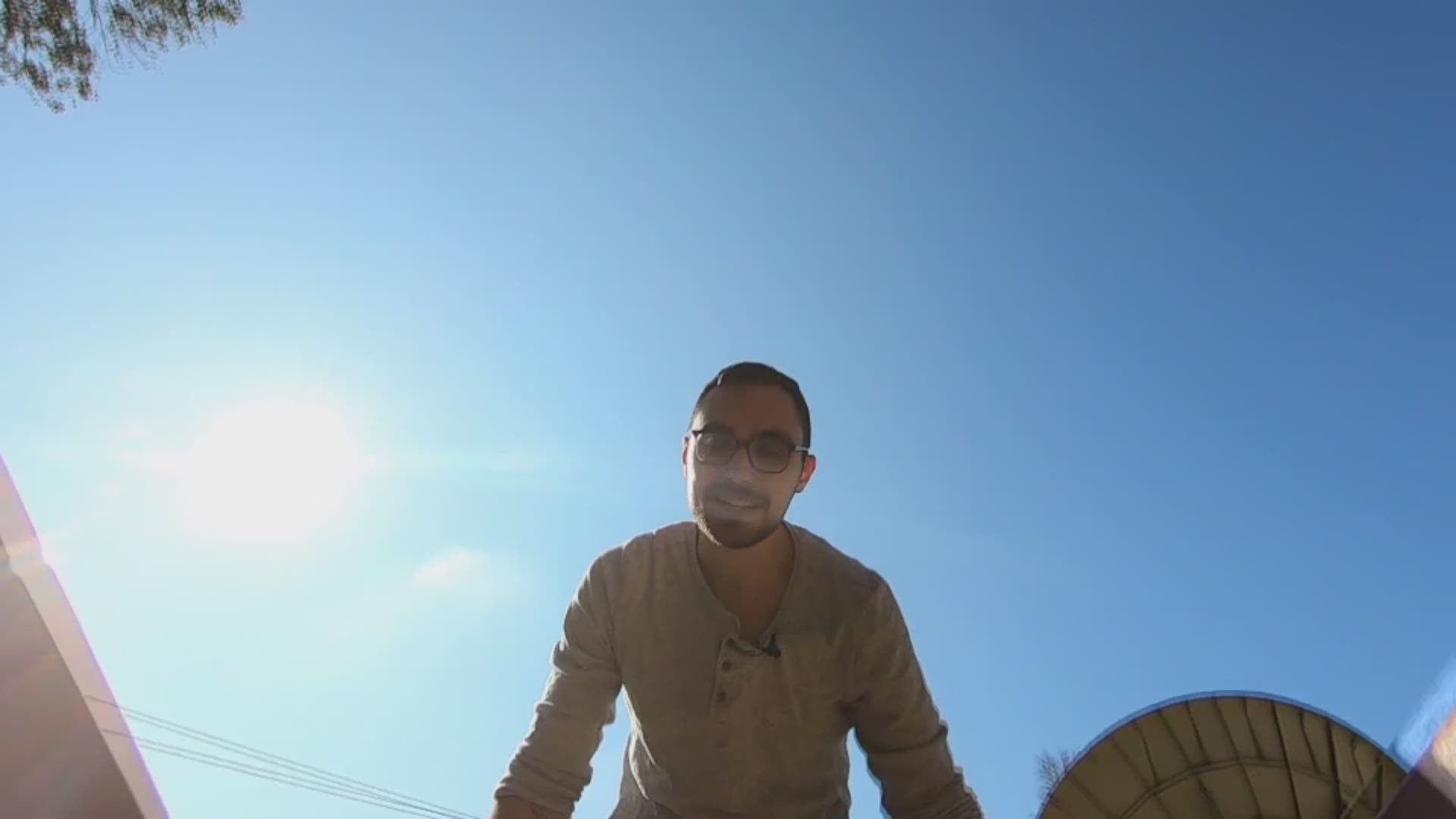COLUMBIA, S.C. — It's officially February, a month best known to southerners as "Fake Spring". The weather this time of the year can trick gardeners into putting plants in the garden that will ultimately succumb to a random frost (or even a hard freeze). Late winter can get very warm and very cold (sometimes in the same day), but gardeners who wait until spring are missing out on some weeks of extra fun in the garden.
Winter gardens have some huge benefits. These plants require very little (if any) additional water, there's also very little weeding, and it's almost impossible to break a sweat under the winter sunshine. While northerners complain about the harshness of winter, we know summer in the south is harsh in a different way. There's a lot of plants we can't grow during the official growing season here in the south because it's too hot, but some of those plants are perfectly happy during the shorter and cooler days of winter.
Here in Gandy's Garden at News 19, production hasn't stopped at all this winter. It's been a mild year so far with low temperatures only dropping down to 23 degrees once. The surplus of rainfall has given the plants all the water they've needed since October.
What's growing in Gandy's Garden in February
- Parsley / Romaine / Collards (since October)
- These were planted as seedlings and have been protected from frosts below 30 degrees.They have had no cold damage.
- Cauliflower (since September)
- These were planted as seedlings in September. They have not been protected from frosts. The cauliflower heads became overripe and cold damaged after two nights of temperatures in the mid 20s. The crop would have been successful if the heads were planted sooner.
- Bok Choy (since September)
- These were planted as seedlings in September with the Cauliflower. They have not been protected from frosts. They have shown damage to temperatures in the mid 20s, but are still productive despite the cold.
- Spinach / broccoli (since January)
- These were germinated from seeds in early January. They were given a frost cloth when temperatures dropped below 30. They have suffered no damage and started to produce adult leaves in late January.
- The Spinach will likely be productive through early Spring, but the Broccoli may not form their florets properly if temperatures get too cold or too warm in the next few weeks. Fortunately broccoli leaves are edible so there's an opportunity to eat something!
- Arugula (since February)
- This was planted on February 3rd. They typically take a week or 2 to begin germinating. These are best started a little sooner in late winter during mild years like 2020. The first crop of Arugula will be ready in March.
- Snow Peas (since February)
- These were planted on January 31st. As of February 3rd, they haven't germinated yet. They likely will take another week to start sprouting. Snow peas can be started sooner than February, especially during mild winters.
Other winter garden chores
- Plant trees and shrubs
- landscaping and fruit trees are happiest when they're planted in late winter. The threat of damaging cold outbreaks is coming to an end and temperatures are still cool enough to limit evaporation. This gives trees time to establish roots before the heat of the summer and save you a lot on water!
- Pull some weeds
- It's easier to tackle deep rooted weeds this time of the year than during the hot days of summer when they're vigorously growing (and we're vigorously sweating).
- Start your summer vegetables and greens!
- If you have a very sunny window (or better yet, grow lights) staring tender plants indoors will give you a big jump start on the growing season. Tomatoes, eggplant, and basil do great indoors and transplant easily. They can be taken outside on warm days and brought inside until the last freeze in March or April.
- Some plants are best started by directly sowing the seeds into the ground. Squash typically doesn't transplant well and grows fast enough to quickly start production.
Remember not to be fooled into planting anything tender in the ground before April. Putting tender plants inside pots are a great way to start the season early. Potted plants can be brought inside if temperatures get to cold (or too hot!).
Happy Gardening!

